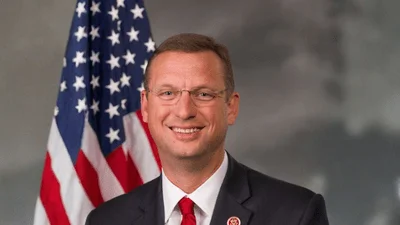National wildfire-risk reduction efforts and a program supporting the health and well-being of wildland firefighters are getting $103 million in Fiscal Year 2022 from President Biden's Bipartisan Infrastructure Law (BIL), the Department of the Interior (DOI) announced earlier this month.
DOI Secretary Deb Haaland made the announcement June 17 during a visit to the National Interagency Fire Center (NIFC) in Boise, Idaho, the agency reported at the time. Haaland said the BIL investment provides necessary assistance to improve the ability of both the land and firefighters to withstand and recover from the effects of wildfire, according to the announcement.
“Wildland firefighters work in incredibly stressful environments that can take a significant toll on their overall health and wellbeing," Haaland said at the NIFC visit, "as well as on those who love them. Standing up a targeted interagency effort to provide trauma-informed mental health care is critical.”
The Department of Agriculture (USDA) and the DOI have been tasked by the BIL to increase attention on the mental and physical health of federal wildland firefighters, according to the DOI report. The joint-agency program will address mental-health needs and environmental risks faced by firefighters, the report states.
The $103 investment is part of the $1.5 billion in DOI funding through the BIL, including $878 million for hazardous fuels management; $325 million for post-fire restoration and rehabilitation activities; $245 million in investments in wildfire preparedness; and $10 million to support science and research, the DOI reports.
The DOI, USDA and the Federal Emergency Management Agency (FEMA) formed the Wildland Fire Mitigation and Management Commission this past December, the DOI reported at the time. Commission members are appointed from federal, state, county, municipal and Tribal government agencies, as well as private-industry stakeholders, according to the report.
The commission is responsible for recommending federal policies and strategies "to more effectively prevent, mitigate, suppress and manage wildland fires, including the rehabilitation of land affected from wildland fires," the report states, with the first recommendations report due to Congress one year after the commission's first meeting. The commission is also tasked with providing a cost-effective strategy to support aerial firefighting equipment needs through 2030, according to the report.
“The Commission established under the Bipartisan Infrastructure Law," Halaan said at the time, "will provide valuable insight into ways we can better prepare communities and ecosystems against the threat of wildland fire across our nation's public and Tribal lands.”
The DOI released in April its Five-Year Monitoring, Maintenance and Treatment Plan to Address Wildfire Risk, a road map for assessing wildfire risk and preparing communities and ecosystems against the threat of wildfire by investing in forest restoration, hazardous fuels management and post-wildfire restoration.
"As wildfire seasons become longer, more intense and more dangerous," Halaand said during the NIFC visit, "President Biden's Bipartisan Infrastructure Law is bringing much needed support to communities across the country to increase the resilience of lands and better support federal wildland firefighters."







